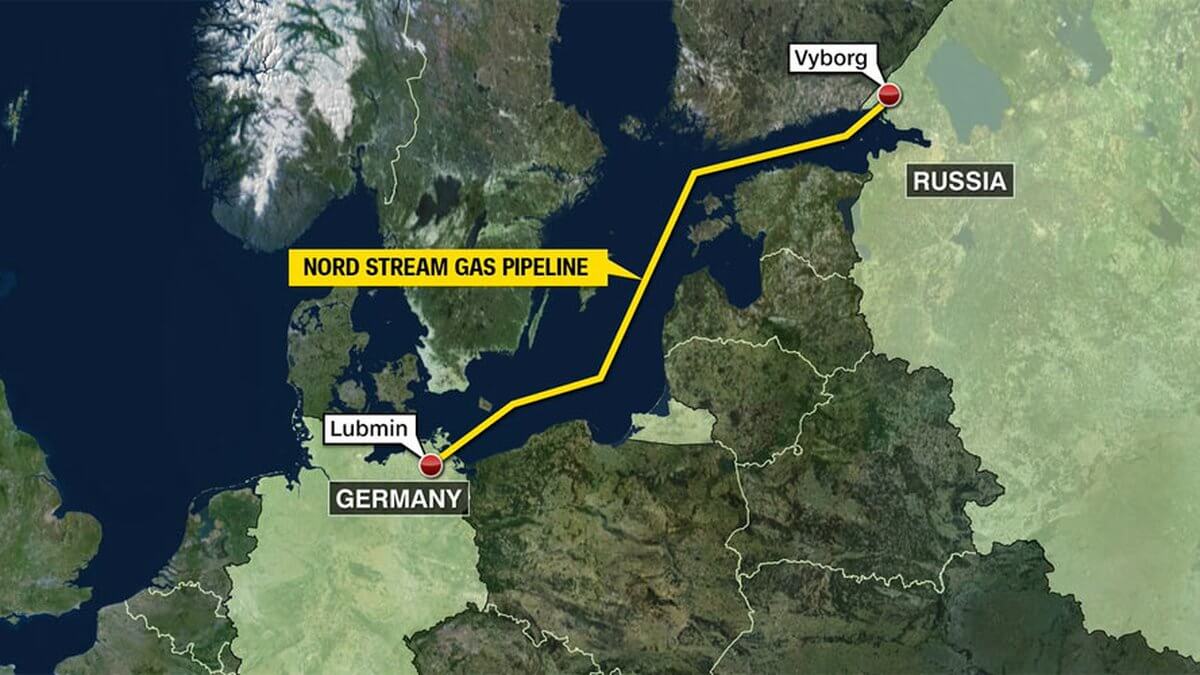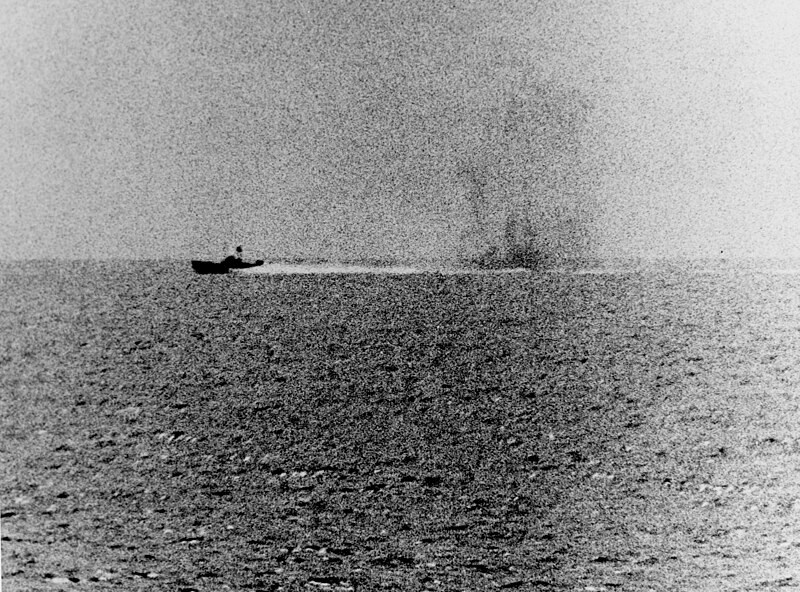Earlier this month, Pulitzer Prize-winning investigative journalist Seymour Hersh claimed that Norway helped the United States blow up the Nord Stream pipelines in September last year.
However, according to Hersh’s latest claims, Norway’s secret cooperation with the US allegedly goes back to the Cold War when the US was fighting the Vietnam War.
On February 8, Hersh published a 5,000-word blog in which he made some startling claims about last year’s bombing of the Nord Stream underwater gas pipelines in the Baltic Sea, detailing how it was a covert operation ordered by US President Joe Biden and carried out by the Central Intelligence Agency (CIA) with the help of the Norwegian navy.
According to Hersh, the Norwegian navy helped CIA divers choose the right spot to plant the explosives and ferried the Americans in a boat to the location, a few miles off Denmark’s Bornholm Island in the Baltic sea.
In his latest blog post on February 22, Hersh explained why the US chose Norway as its partner for destroying the Nord Stream gas pipelines.
“Norwegian Navy has a long and murky history of cooperation with American intelligence,” writes Hersh.
During the Vietnam War, Norway sold heavily-armed boats to the CIA, which the agency used for clandestine operations against the USSR and China-backed North Vietnam, claimed Hersh noting that Norway’s involvement in this secret war was deeper than previously reported.
According to Hersh, these Norwegian boats led to the formation of a pretext for the US bombing campaign in the North, which claimed the lives of several Vietnamese citizens and soldiers.

Did Norway Drag The US Into The Vietnam War?
Hersh said that Norway invested in developing large armed boats, called the Nasty-class boats, to protect its more than 2200 kilometers-long Atlantic coastline during the Cold War, which was more powerful than the US boats.
As Hersh claims, Norway subsequently used these boats to assist the CIA in its covert operations against North Vietnam during the Vietnam war, much before the US official got involved in the conflict.
In mid-1964, the US-backed South Vietnam started carrying out raids involving land-to-shore radar and military installations bombardments along the North Vietnamese coast, using mortars, rockets, and recoilless rifles fired by South Vietnamese commandos from patrol boats.
The US Defense Department oversaw these raids with the support of the CIA.
Meanwhile, the US Navy also conducted occasional reconnaissance and SIGINT-gathering missions farther offshore in the Tonkin Gulf, called the ‘Desoto patrols’ which involved destroyers carrying out patrols to gather valuable information for these raids, such as locations of coastal radar transmitters and navigation aids along the North Vietnamese coastline.
However, according to Hersh’s claims, citing a source “within the intelligence community,” the CIA and the US Navy also carried out some of their secret missions using the fast attack boats sold by Norway. Some of these boats were even manned by Norwegian officers and crew.

Hersh claims that these vessels, manned and captained by Norwegian sailors, carried US Navy SEALs to missions against “far more aggressive targets that included heavily defended North Vietnamese radar facilities.”
According to Hersh, these “more aggressive” missions were commanded by the Joint Chiefs of Staff in Washington.
“It was a secret war within a secret war,” Hersh writes, adding that at least two Navy SEALs were wounded on these missions, and received the Medal of Honor in secret.
It was these covert missions, which according to Hersh, eventually led to the famous Gulf of Tonkin incident in August 1964, which saw a confrontation between North Vietnamese patrol boats with American destroyer(s) that caused the US to intervene in the Vietnam War directly.
According to the official version, it was the US Navy’s Desoto patrols, which North Vietnam probably perceived as a collaborative effort with the South Vietnamese raids against North Vietnam’s radars and military installations.
Also, there was no coordination between the Desoto patrols and South Vietnamese raids, as per the official version of the events.
What Caused The Gulf Of Tonkin Incident?
On the night of July 30–31, 1964, South Vietnamese commandos attacked North Vietnamese radar and military installations on Hon Me and Hon Ngu islands in the Gulf of Tonkin. At the same time, USS Maddox was on patrol near the same area, probably unaware of the raids that had taken place there.
The USS Maddox observed North Vietnamese patrol torpedo boats pursuing the South Vietnamese vessels and withdrew from the area. However, it returned on August 1. The following day, the Maddox detected three North Vietnamese patrol boats approaching their position from the west.

Onboard the ship, Commander, Destroyer Division 192, Captain John J. Herrick, ordered gun crews to open fire if the fast-approaching boats closed to within 10,000 yards (approx. 9 kilometers) of the destroyer and at about 1505 (approx. 1.3 kilometers) three 5-inch shots were fired across the bow of the closest boat.
In return, the North Vietnamese boats fired torpedoes and 14.5-mm guns. The Maddox called in air support from a nearby aircraft carrier, USS Ticonderoga.
Two North Vietnamese boats were heavily damaged in the ensuing firefight, while the third was left dead in the water and burning. The Maddox was unharmed.

The next day, the Maddox resumed her Desoto patrol. President Lyndon B. Johnson ordered the USS Turner Joy to reinforce the Maddox to demonstrate American resolve and the right to navigate in international waters.
By the night of August 4, US intelligence intercepted North Vietnamese communications that suggested an intent of offensive maritime operations in the Gulf of Tonkin. However, those communications probably concerned the operations to salvage the torpedo boat damaged in the earlier firefight.
Also, that night proved to be stormy, with thunderstorms and heavy rain reducing the visibility, and wave heights increased to six feet. Apart from the difficult detection conditions, Maddox’s SPS-40 long-range air-search radar and Turner Joy’s SPG-53 fire-control radar were both inoperative.

Under these challenging conditions of visibility and detection, the Maddox’s Commander wrongly cabled an alarm that his ship was under attack, which he later rescinded.
However, President Johnson and Secretary of Defense Robert McNamara claimed to the US public that North Vietnam had attacked a destroyer and asked the US Congress to pass the Gulf of Tonkin Resolution, which allowed President Johnson to escalate US military involvement in the Vietnam War.
That being said, Hersh continues with his claims of Norwegian patrol boats being responsible for the US military intervention in the Vietnam war.
He concluded with a question: “This bit of top secret and heretofore unknown history raises, to this reporter, an obvious question: what else do we not know about the secret operation in Norway that led to the destruction of the pipelines?”
The US has dismissed Hersh’s earlier report as false, with US National Security Council spokesman John Kirby saying, “It’s a completely false story. There is no truth to it. Not a shred of it. It is not true. The United States and no proxies of the United States had anything to do with that, nothing.”
After Hersh’s investigative report was published, Russian foreign ministry spokeswoman Maria Zakharova asked the US to address the “facts” presented by Hersh.
On its part, Russia has maintained, without offering any proof, that NATO countries were responsible for the explosions in the Nord Stream 1 and 2 pipelines.
- Contact the author at tanmaykadam700@gmail.com
- VIEWS PERSONAL OF AUTHOR
- Follow EurAsian Times on Google News




